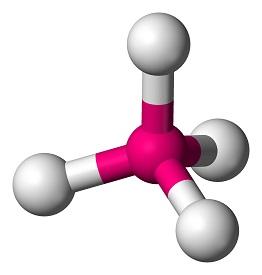Bonding is the process of forming chemical bonds due to the attractive interactions of different atoms. This attraction may be seen as the result of different properties and behaviors of the outermost electrons of individual atoms, or valence electrons. The bond itself is caused by the electrostatic attraction between opposite charges; and the formation of the different types of bonds depends mainly on the strength of this attractive force.
The basics of bonding involve the electrostatic force of attraction between a negative charge (or partial negative charge) to a positive charge (or partial positive charge). Such bonds, can either be covalent or ionic, and these attractive interactions help these atoms form molecules, and larger structures such as compounds. Double and triple covalent bonds can also be formed, depending on the number of electrons being shared between the two bonding atoms.
The three-dimensional bonds in these larger structures, can be represented by a “-“ in a molecular formula. For example, for ethanol with chemical formula C2H5OH, bonds between the core functional groups can be depicted as CH3-CH2-OH. Furthermore, if a double bond is present, meaning two electrons are being shared, such as in ethene with chemical formula, C2H4, the double bond can be represented as H2C=CH2.
In addition, weaker bonds exist between molecules, and these are known as intermolecular bonds. These arise due to weaker electrostatic forces, usually caused by a minor difference in electronegativity. An example of this type of bond is the hydrogen bond which arises due to a difference in electronegativity between hydrogen and elements such as fluorine, nitrogen, and oxygen. These hydrogen bonds are highly prevalent in compounds such as water, with a chemical formula of H2O.
Thus, understanding the concept of chemical bonding, in terms of why atoms bond, how they bond and the three-dimensional structures which result, is integral for every branch of chemistry.
© BrainMass Inc. brainmass.com June 28, 2024, 12:18 pm ad1c9bdddf
